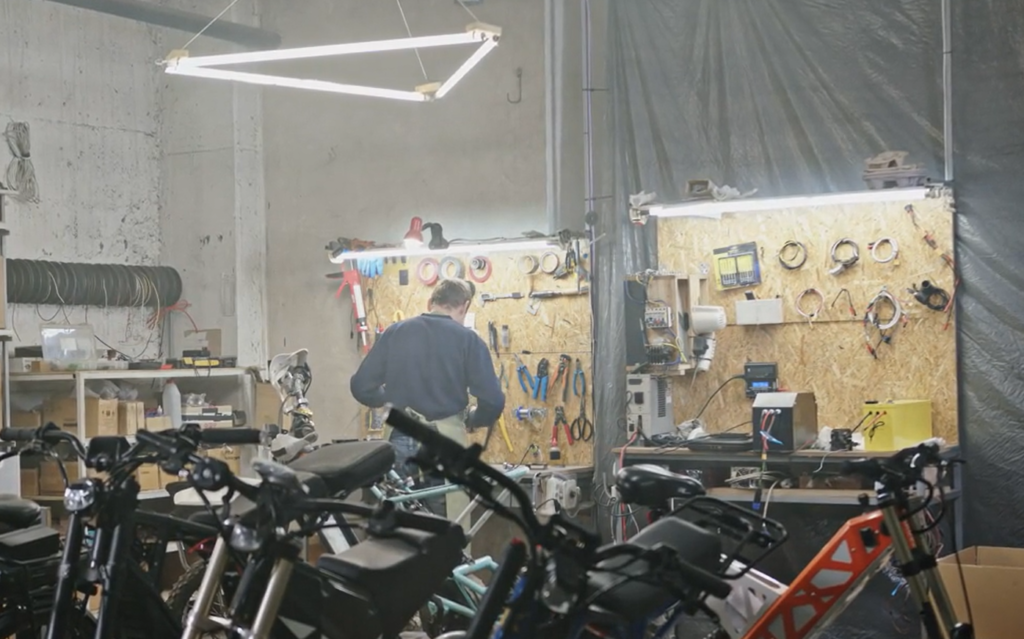If you're working on a concrete, stone or brick wall, you probably need an efficient drill. But these construction tools come in a wide range of power ratings, so how do you choose the right one for your specific situation? And what power exactly are we talking about?
The short answer, for those of you in a hurry:
| Usage | Power (Joules) perforator | Description | Example of a model |
| Occasional | 1.5 to 3 J | Drilling light concrete, making a few holes, removing tiles. | Makita HR2470 2.4J - 780W |
| Regular | 4 to 6 J | Moderate demolition work, drilling through thicknesses of up to 25 mm, demolishing partitions, creating openings in walls. | Milwaukee M18 ONEFHPX-0X cordless 5J 18V |
| Intense | 8 to 10 days and more | Heavy demolition, professional use, continuous work, maximum drilling capacity. | Hyundai 56086 SDS-Max 1300W 20J |
The following lines detail the different power levels in joules for perforators, to help you choose the ideal perforator.
What is power in joules?
The Joule is a unit of measurement for energy in the international system. Its symbol is the letter J.
One Joule corresponds to the energy transferred when a force of 1 Newton moves an object over a distance of 1 metre.
In the specific case of perforators, the Joule is used to measure the tool's percussive power. This force is needed to perforate hard materials. The higher the Joule rating, the greater the force with which the perforator can strike.
Note that percussive power, expressed in Joules, should not be confused with electrical operating power, indicated in Watts.
A 3 Joule perforator is suitable for light materials, while a 10 Joule perforator is more suitable for heavy demolition.
Choosing the power of a perforator in Joules according to how it will be used
The power in Joules of a drill must be chosen according to its intended use. There are 3 main types of use:
Occasional use : a drill with a power rating of between 1.5 and 3 Joules is sufficient. You can use it to drill light concrete, make a few holes or remove tiles. It's all about small domestic jobs. The Makita HR2470 2.4J - 780W is a good example of a punch for occasional use.
Regular use : a 4-6 Joule power drill will do the job. This type of drill can be used for moderate demolition or drilling work. It can be used to drill through thicknesses of up to around 25 mm, to demolish partitions or to create openings in walls. Often used for renovation work, these are the most widespread and affordable perforators on the market. With an impact power of 5 Joules, the Milwaukee M18 ONEFHPX-0X 5J 18V cordless hammer is a good example of a hammer for more intensive use, but not for professionals.
Intensive use : Designed for construction professionals, these perforators often have a power rating of between 8 and 10 joules. They can be used for heavy, uninterrupted demolition work, with maximum drilling capacity. Perfect for construction sites requiring high percussive force. The Hyundai 56086 SDS-Max 1300W 20J hammer drill, which delivers 4,000 blows per minute, is a good example of a heavy-duty hammer drill.
A few additional criteria to help you choose the right drill
The power in Joules of the drill is not the only indicator to consider when choosing a hammer drill. You also need to take into account :
Speed of rotation : This determines the drilling capacity. A value between 300 and 1300 RPM is sufficient for most jobs. For example, the Bosch GBH 2-28 DFV has a rotation speed of 1300 RPM, which is ideal for drilling in concrete, stone or brick.
Keystroke frequency in CPM (strokes per minute) : it is necessary for chiselling. If the frequency is high, it means more blows per minute, and this means that even the hardest materials can be demolished more effectively. For example, the Dewalt DCH273P2 has a striking frequency of up to 4600 CPM, making it ideal for light to moderate demolition.
Type of chuck (SDS+, SDS Max.) : Depending on the type of chuck, it may be easier or harder to change drills and bits, and the capacity of the tool may be greater or lesser.
- SDS+ : A commonly used chuck, it's perfect for drilling up to 30mm, making it ideal for everyday DIY projects around the home. The Makita HR2470 features an SDS+ chuck for quick accessory changes.
- SDS Max : For more powerful perforators, it allows you to drill up to 50 mm. It is more common in the professional world. One example is the Hilti TE-60-ATC-AVR, which is widely used by construction professionals, either for hire or purchase.
Comparison between the power of corded and cordless perforators
Wire drills
Corded drills express their power in watts, generally between 800 and 1500W. This high power makes them particularly suitable for long jobs and demanding tasks. For example, the Bosch GBH 8-45 DV, with 1500W of power, is ideal for heavy demolition projects and intensive drilling. Corded drills offer consistent performance without worrying about runtime, making them reliable for long jobsites and professional work.
Cordless drills
Cordless drills, on the other hand, express their power in volts (V) and ampere hours (Ah). They offer greater mobility, allowing you to work without being limited by the length of the cable. For standard use, a 20V drill with a 2.5 to 5 Ah battery is sufficient. For example, the DeWalt DCH273P2 operates at 20V and offers great flexibility for light to moderate work. For more intensive use, 36V models with 5 to 10 Ah batteries are recommended, such as the Makita DHR400ZKU, which combines power and autonomy for intensive drilling and chiselling tasks.
Although cordless drills are generally less powerful than their corded counterparts, recent technological advances have considerably improved their efficiency and endurance, making them competitive for many types of work.
What are the best brands of hammer drills?
Bosch
Bosch is renowned for the durability and performance of its drills. Models like the Bosch GBH 2-28 DFV are ideal for regular DIY jobs, thanks to a power output of 3.2 joules and a rotation speed of 0 to 1300 rpm. For heavier work, the Bosch GBH 8-45 DV, with its 12.5 joules and 1500W, is ideal for intensive demolition sites.
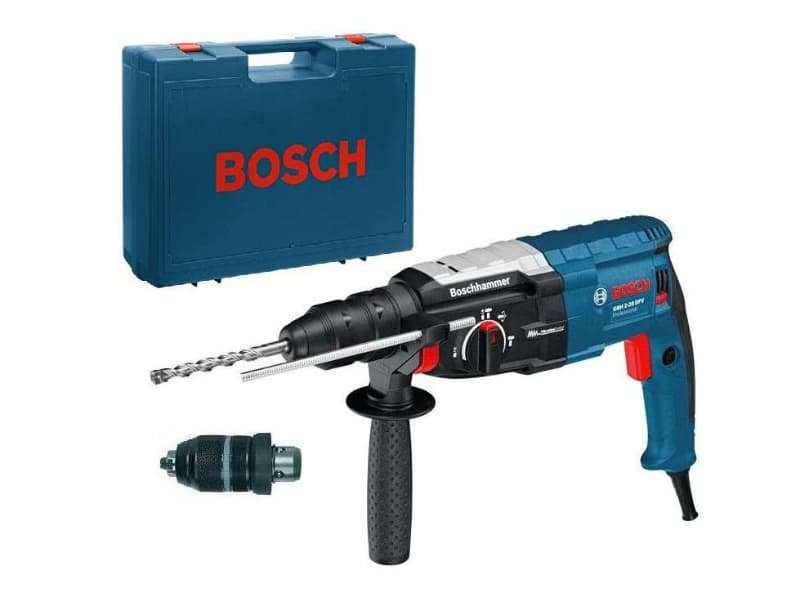

Makita
Makita offers excellent value for money, especially for regular users. The Makita HR2470, with its 2.4 joules and 780W, is a popular choice for occasional jobs. For more intensive tasks, the Makita DHR400ZKU, a 36V cordless model, combines power and mobility, ideal for sustained drilling and chiselling.
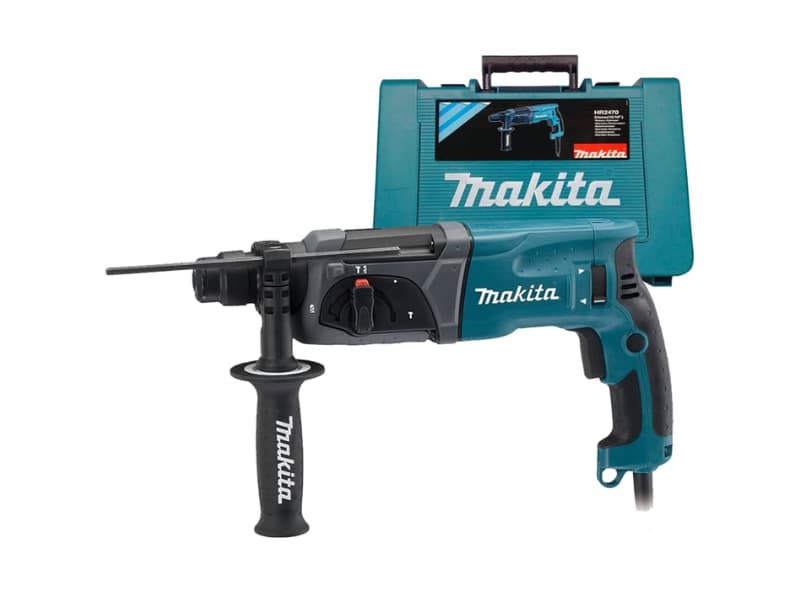
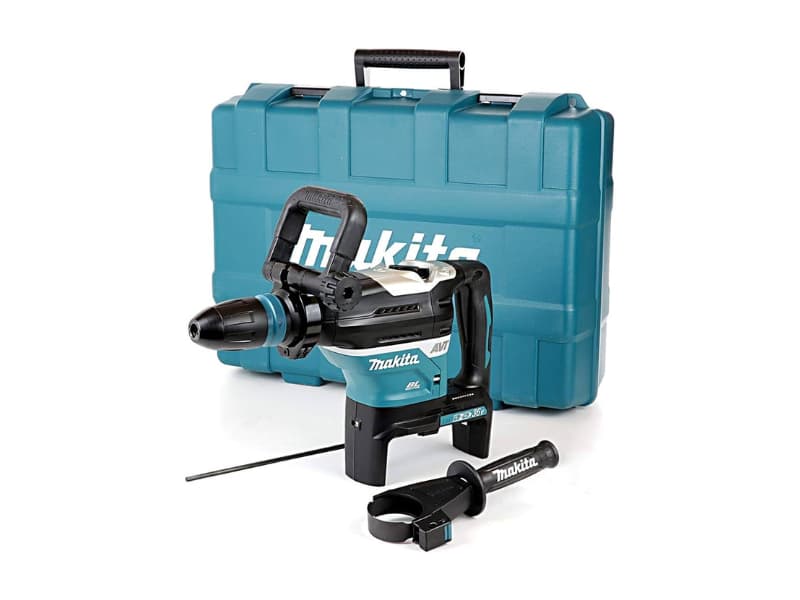
DeWalt
DeWalt specialises in powerful cordless drills. The DeWalt DCH273P2, with a 20V battery and 2.1 joules of power, is perfect for light to moderate work while offering great flexibility. For more demanding work, the DeWalt DCH481X2, with 6.1 joules of power and a 60V battery, is designed for intensive tasks.

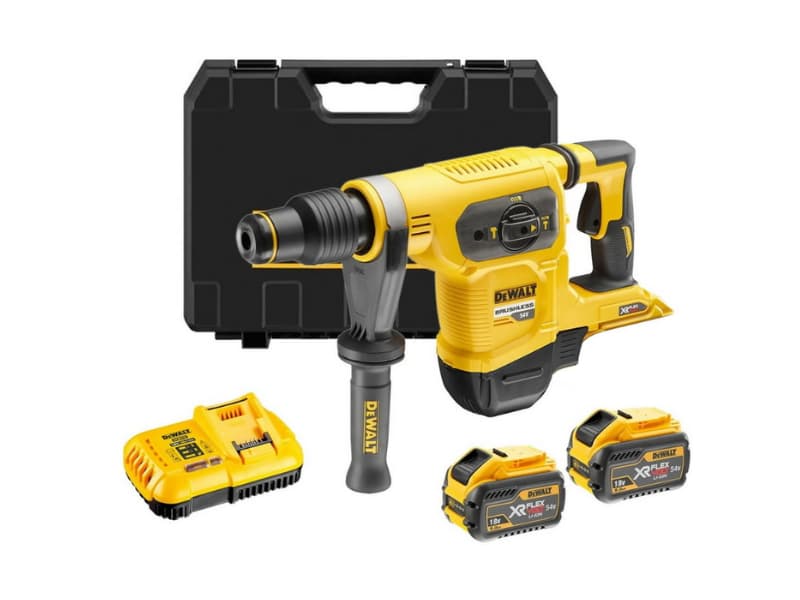
Hilti
Hilti is the preferred choice for professionals who need maximum power. The Hilti TE 60-ATC-AVR, with its 12 joules and high impact frequency, is designed for the most demanding demolition work. This model is extremely robust and offers unrivalled performance, making it ideal for large-scale sites and intensive use.




